We haven’t done that much travelling while we’ve been here yet: for various reasons, there just hasn’t been time. And we have now officially scaled down any ambitions we might have had to travel all over Spain! In fact, we’ve pretty much given up on any idea of travelling much beyond the Basque Country – there just isn’t going to be time.
Even in the Basque Country we haven’t gone very far. Apart from occasional train journeys across it to get to France, we have only really explored our local region, Bizkaia (Biscay), of which Bilbao (Bilbo in Basque) is the centre. Until recently, we hadn’t been to the other two regions – Gipuzkoa, next to France, of which San Sebastian is the centre; and Alava, south of the mountains, of which Vitoria (Gasteiz in Basque) is the centre.
Even in the Basque Country we haven’t gone very far. Apart from occasional train journeys across it to get to France, we have only really explored our local region, Bizkaia (Biscay), of which Bilbao (Bilbo in Basque) is the centre. Until recently, we hadn’t been to the other two regions – Gipuzkoa, next to France, of which San Sebastian is the centre; and Alava, south of the mountains, of which Vitoria (Gasteiz in Basque) is the centre.
We made a start on Gipuzkoa a couple of weekends ago, though, when we spent a weekend in San Sebastian (Donostia in Basque). (Picture below from the internet).
Mid-January may not seem a promising time to visit one of the most beautiful seaside resorts in Spain, but we wanted to experience the San Sebastian ‘Tamborrada’, the fiesta on the ‘Dia de San Sebastian’, perhaps the biggest event of the year there, and one of the most popular in Spain. We’re very glad we went: it was yet another quite extraordinary event. The weather was absolutely atrocious, but in a way that made it all the more extraordinary.
The name ‘Tamborrada’ sounds as if it might have something to do with percussion instruments – and indeed it does. Around 10,500 of them, in fact. Playing non-stop for 24 hours.
We knew that it would be noisy, and we knew that, staying in a little pension in the centre of the old town, we might not get much sleep because of the drumming. But we really weren’t prepared for the scale of the whole thing, nor for the fact that it all went ahead despite the truly awful weather.
What happens is that, at the stroke of midnight on Saturday night, drumming bands of around 50 people (each one accompanied by a brass band of six or seven players) start marching about the town drumming, and they keep drumming for 24 hours – all night and all day – finishing at midnight on Sunday night.
The name ‘Tamborrada’ sounds as if it might have something to do with percussion instruments – and indeed it does. Around 10,500 of them, in fact. Playing non-stop for 24 hours.
We knew that it would be noisy, and we knew that, staying in a little pension in the centre of the old town, we might not get much sleep because of the drumming. But we really weren’t prepared for the scale of the whole thing, nor for the fact that it all went ahead despite the truly awful weather.
What happens is that, at the stroke of midnight on Saturday night, drumming bands of around 50 people (each one accompanied by a brass band of six or seven players) start marching about the town drumming, and they keep drumming for 24 hours – all night and all day – finishing at midnight on Sunday night.
Altogether there are 195 bands (!) of around 50 people each, involved in this: according to the official programme, a total of 10,500 people (all local folk) drumming! And all 10,500 of them are dressed either as Napoleonic soldiers or as chefs…. Half the drummers are dressed as soldiers, and the other half as chefs. The ‘soldiers’ (known as ‘tamborreros’) have traditional drums and the ‘chefs’ have barrel drums.
They don’t all drum at the same time. There is a huge schedule that says when each band will play, and gives their marching routes. Each band takes a 3-hour shift, so that any one time there will probably be around 25 bands playing around the city. Even if it is raining very hard with high-speed winds all night. Which it was.
Meanwhile, the population of the town goes mad. Having started early on Saturday evening, they drink in the streets all Saturday night and probably much of the next day too. And they continue to drink in the streets – you guessed it – even if it is raining very hard with high speed winds all night. Which it was.
The brass players ( - there seems to be an amazing number of superb brass players in the Basque country -) play a series of traditional march tunes, over and over again for the whole 24 hours, whilst the drummers just keep drumming along.
The brass players ( - there seems to be an amazing number of superb brass players in the Basque country -) play a series of traditional march tunes, over and over again for the whole 24 hours, whilst the drummers just keep drumming along.
As the bands march around town, they are followed by hundreds of people who sing – and often bang – along. Little children (and some adults) come along with mini-drums and bang along. And every now and again the bands stop and are plied with wine by the locals in that street.
There is also a ‘tamborrada infantil’ in which hundreds of children take part.
The most popular marches are the ‘Marcha de San Sebastian’ and the ‘Diana’ march. We heard these many, many times. You can hear them here, drumming and all:
http://e-donostia.blogspot.com.es/2010/01/la-tamborrada-de-san-sebastian-al.html
http://e-donostia.blogspot.com.es/2010/01/la-tamborrada-de-san-sebastian-al.html
Given the weather - heavy and continuous rain with very high winds - we were a little reluctant to go out for the midnight opening ceremony and thought it might be a bit of a wash-out anyway. How wrong we were! Thousands of people – and umbrellas – were crammed into the Plaza Nueva, and the rain was not going to deter them one little bit. The atmosphere was extraordinary. Thousands of other people were sitting in ‘tabernas’ around the city watching it all on tv, or listening to bands in other parts of the city.
Here are a couple of 2 minute Basque tv films of the event which give a good idea of the atmosphere:
http://www.eitb.com/es/videos/detalle/1231558/video-tamborrada-2013--la-lluvia-protagonista-donostia/
http://www.eitb.com/es/videos/detalle/1232004/video-tamborrada-donostia--arriada-real/
and a longer (6 min) French tv report which also catches the whole fiesta very well:
http://www.youtube.com/watch?v=WlGgJRHUswc
We stayed there for an hour or so, caught up in the jubilant mood, listening to the bands, with the crowds singing along to the marches, which they clearly all knew very well, marched around town, and then wended our way back to the pension, encountering various bands and numerous scenes of street celebration on the way.
http://www.eitb.com/es/videos/detalle/1231558/video-tamborrada-2013--la-lluvia-protagonista-donostia/
http://www.eitb.com/es/videos/detalle/1232004/video-tamborrada-donostia--arriada-real/
and a longer (6 min) French tv report which also catches the whole fiesta very well:
http://www.youtube.com/watch?v=WlGgJRHUswc
We stayed there for an hour or so, caught up in the jubilant mood, listening to the bands, with the crowds singing along to the marches, which they clearly all knew very well, marched around town, and then wended our way back to the pension, encountering various bands and numerous scenes of street celebration on the way.
We chickened out of staying up all night (unlike many of the natives), and instead retired to bed at about 2am, where we incredibly managed to sleep on and off despite a huge brass and drum band marching past our window every 30 minutes or so and the drunken revellings on the street outside. (We were staying, wouldn’t you know, on one of the popular drinking streets…)
Next morning, the rain had eased off a bit, and the bands were still going at it, with the rest of the day still to go. Unfortunately, we had to leave in the afternoon, so we weren’t able to see the finale back in the square at midnight.
There were so many amazing things about the whole event it’s difficult to know where to start. We were blown over – even more than we have been on previous similar occasions – by the extraordinary level of community commitment and coherence that enables this thing to happen. The population of San Sebastian is about 180,000 – the same size as York. I don’t think I could imagine 10,500 people rehearsing in bands for weeks and then dressing up in Napoleonic costume and taking to the streets to drum for 24 hours in the pouring rain in York, can you? Or many thousands of other people following them around and singing along to the marches.
Then there was the fact that it all went ahead in the face of such appalling weather – demonstrating the unshakeable Spanish determination to have fun (noisily in large groups) at the appointed times and places (preferably outside and in the middle of the night) regardless of any discomfort they might suffer in the process.
Then there was the bizarre sight of 10,000 people in Napoleonic costume wandering the streets.
Next morning, the rain had eased off a bit, and the bands were still going at it, with the rest of the day still to go. Unfortunately, we had to leave in the afternoon, so we weren’t able to see the finale back in the square at midnight.
There were so many amazing things about the whole event it’s difficult to know where to start. We were blown over – even more than we have been on previous similar occasions – by the extraordinary level of community commitment and coherence that enables this thing to happen. The population of San Sebastian is about 180,000 – the same size as York. I don’t think I could imagine 10,500 people rehearsing in bands for weeks and then dressing up in Napoleonic costume and taking to the streets to drum for 24 hours in the pouring rain in York, can you? Or many thousands of other people following them around and singing along to the marches.
Then there was the fact that it all went ahead in the face of such appalling weather – demonstrating the unshakeable Spanish determination to have fun (noisily in large groups) at the appointed times and places (preferably outside and in the middle of the night) regardless of any discomfort they might suffer in the process.
Then there was the bizarre sight of 10,000 people in Napoleonic costume wandering the streets.
And then there was the extraordinary number of drums. Somebody must be doing very well indeed from making and selling drums, Napoleonic military dress and chefs’ uniform in San Sebastian… And drumming is clearly an everyday aspect of life in San Sebastian. The children of the town must get quite a shock when they go elsewhere and realise that in most places most people don’t play drums….
What’s it all about? Well, no-one quite knows the exact origin of the whole thing, but it seems to be some kind of merging of medieval fiesta traditions with celebrations for the liberation of San Sebastian from Napoleonic troops in 1813, when the British forced the French out whilst burning the town down. This year (2013) was the 200th anniversary of this event, so there were extra ceremonies and marches to celebrate this all day on Saturday before the fiesta itself began at midnight.
The other thing about the Tamborrada is that it is intimately connected with another typically idiosyncratic and extraordinary Basque tradition – the ‘txoko’. A ‘txoko’ is a community gastronomic society. There are hundreds of them. They can be found all over the Basque country, but the greatest concentration is in San Sebastian. Each txoko owns or rents its own private restaurant, where the members gather to cook meals (always traditional Basque food) for each other.
Until recently, they were all-male; now many of them admit women – though it is still the men who do the cooking.
Each txoko organises a drumming group in the Tamborrada. Before they are due to march, they have a big feast in their dining club for all the marchers, and then the marchers assemble in front of the txoko and set off to do their shift.
Until recently, they were all-male; now many of them admit women – though it is still the men who do the cooking.
Each txoko organises a drumming group in the Tamborrada. Before they are due to march, they have a big feast in their dining club for all the marchers, and then the marchers assemble in front of the txoko and set off to do their shift.
Although the bands were originally all male, women now play a major part too (although controversially in some bands they are relegated to the role of barmaid, whilst in others they take an equal role as a soldier or chef.)
Here’s a recent article in the Guardian about the txokos:
http://www.guardian.co.uk/world/2011/mar/30/basque-country-big-society-spain
One of the amazing things about txokos is that, even without them, there are more communal places to eat and drink in the Basque Country than anywhere else you have ever seen. The ratio of bars and restaurants to people must be one of the smallest in the world (and nowhere more so than in San Sebastian); and yet they have txokos as well! It’s all indicative of the unusually strong link between food and community that is characteristic of this place.
As for San Sebastian itself, it’s a very beautiful city. Like many Basque towns and cities, it suffers from some really terrible post-war building (after German bombing in the Spanish Civil War) – and we didn’t really see it in the best weather conditions (although the sun did come out for a little while on Saturday), but its natural setting, a wonderful huge circular bay with broad sandy beach and impressive rocks framing the harbour, is fantastic, and the harbour and old town are very picturesque. We will go again in the summer and report more then.
Here’s a recent article in the Guardian about the txokos:
http://www.guardian.co.uk/world/2011/mar/30/basque-country-big-society-spain
One of the amazing things about txokos is that, even without them, there are more communal places to eat and drink in the Basque Country than anywhere else you have ever seen. The ratio of bars and restaurants to people must be one of the smallest in the world (and nowhere more so than in San Sebastian); and yet they have txokos as well! It’s all indicative of the unusually strong link between food and community that is characteristic of this place.
As for San Sebastian itself, it’s a very beautiful city. Like many Basque towns and cities, it suffers from some really terrible post-war building (after German bombing in the Spanish Civil War) – and we didn’t really see it in the best weather conditions (although the sun did come out for a little while on Saturday), but its natural setting, a wonderful huge circular bay with broad sandy beach and impressive rocks framing the harbour, is fantastic, and the harbour and old town are very picturesque. We will go again in the summer and report more then.
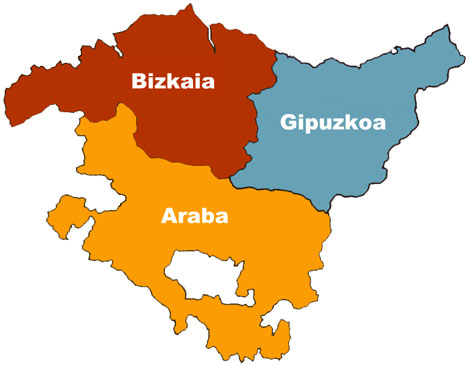
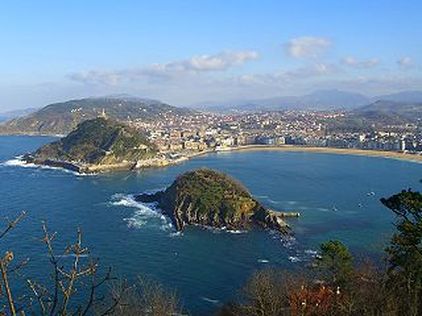
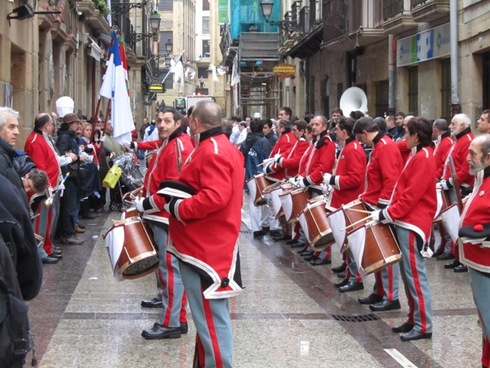
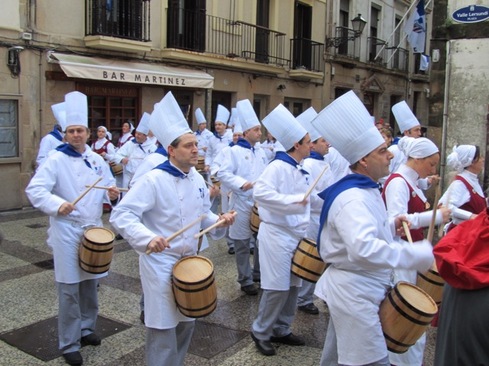
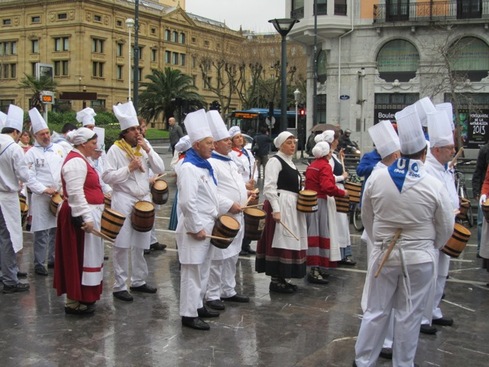
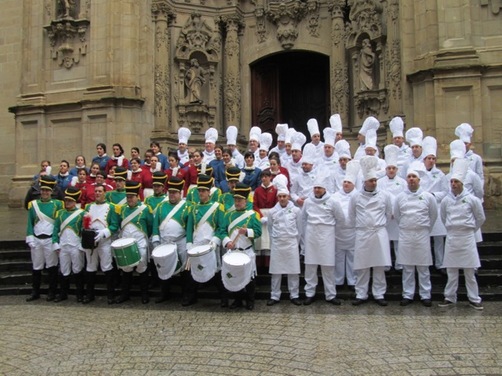
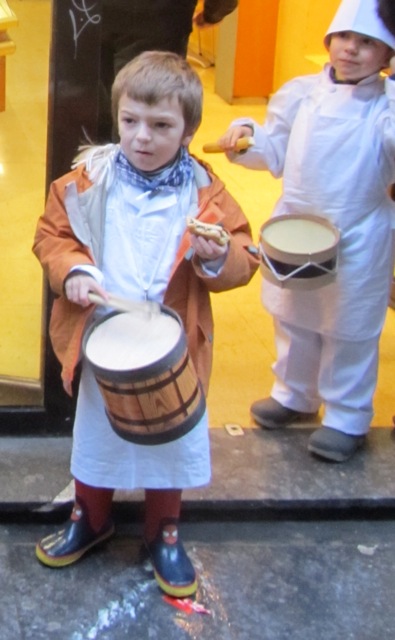
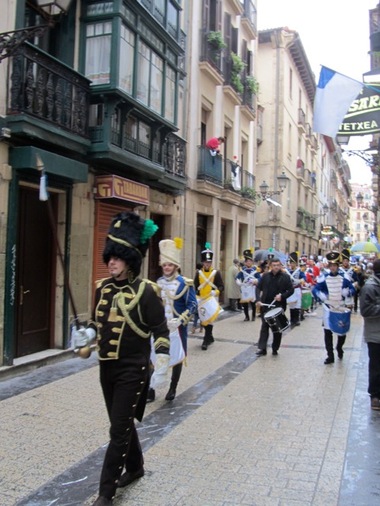
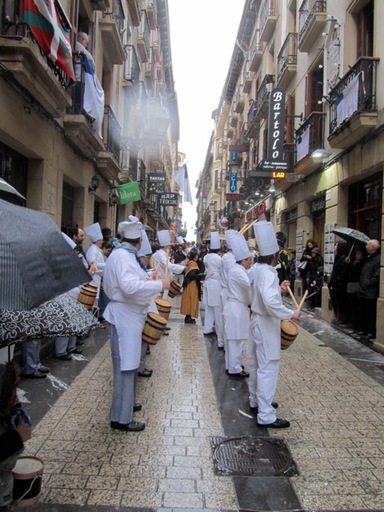
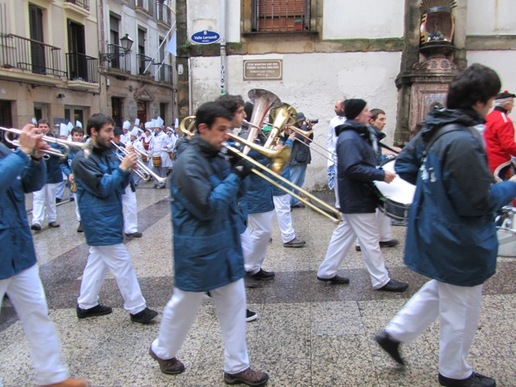
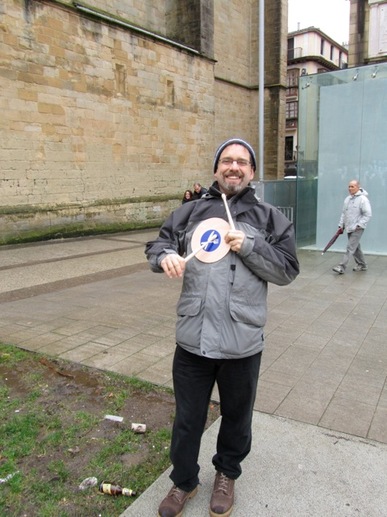
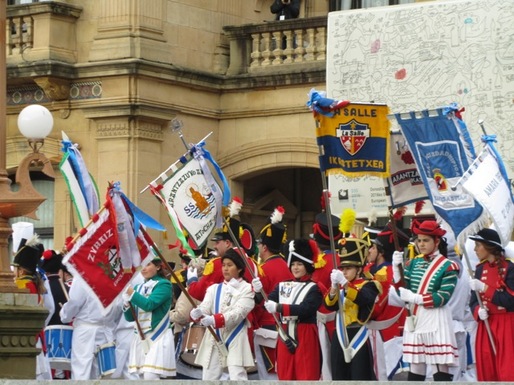
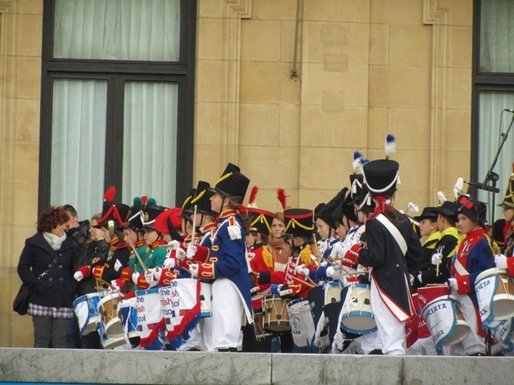
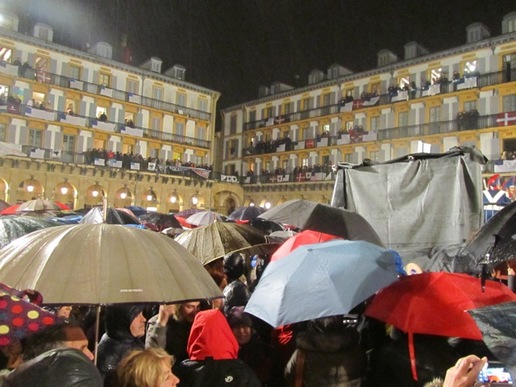
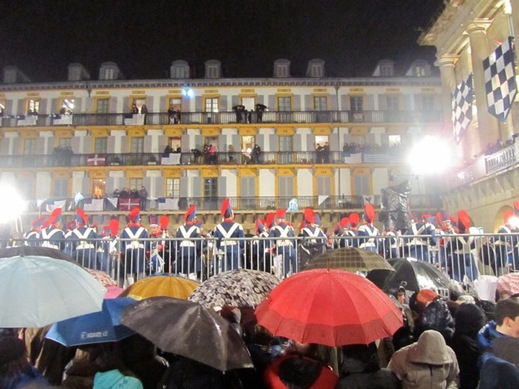
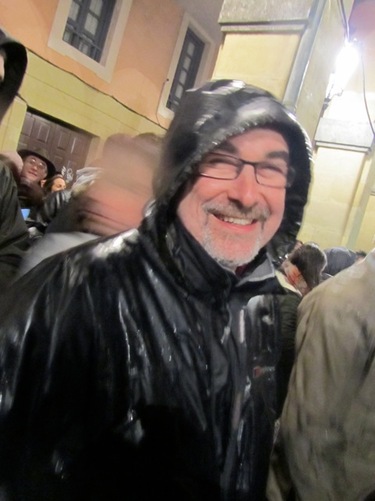
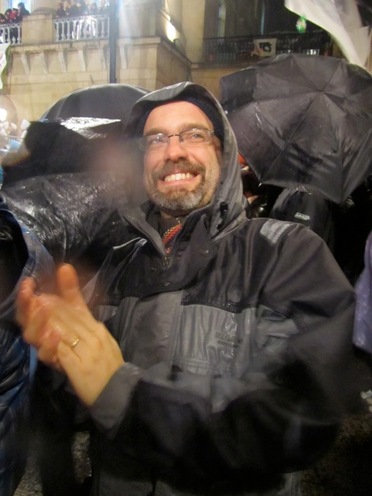
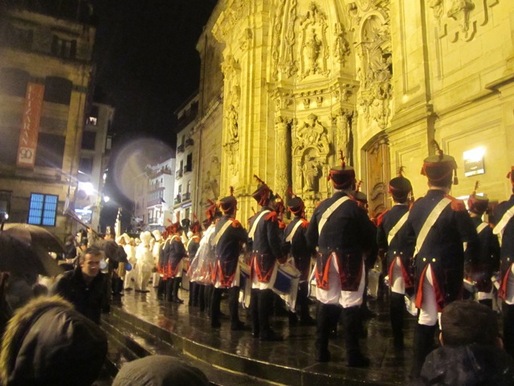
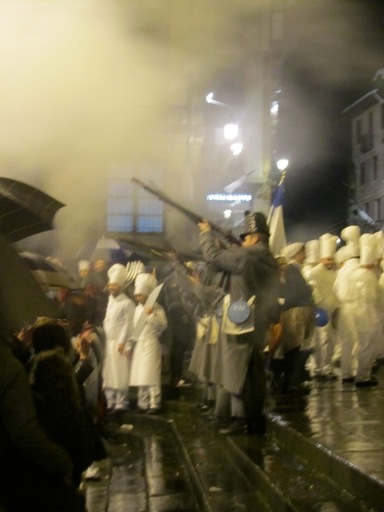
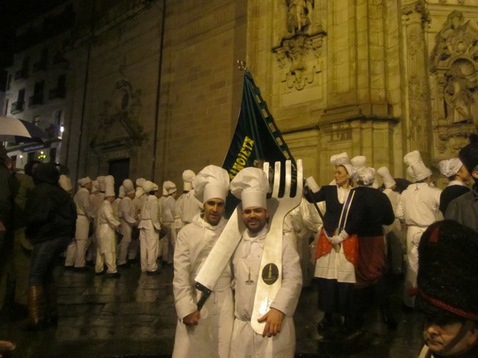
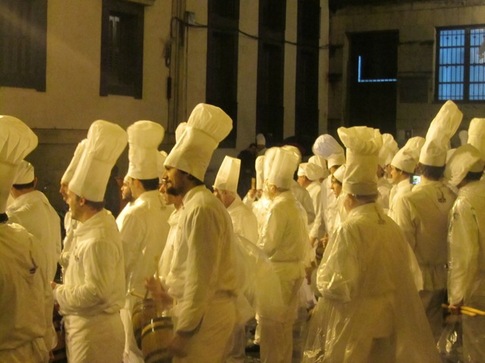
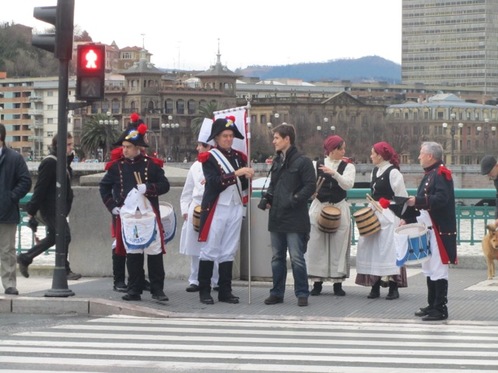
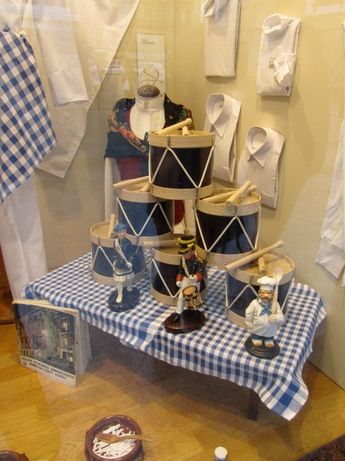
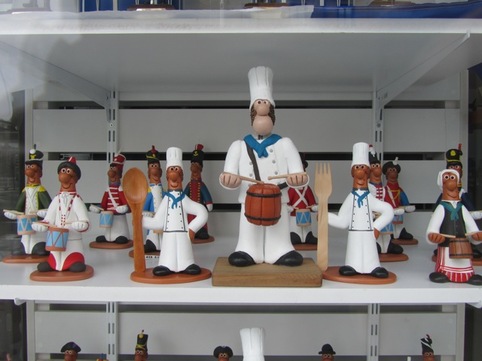
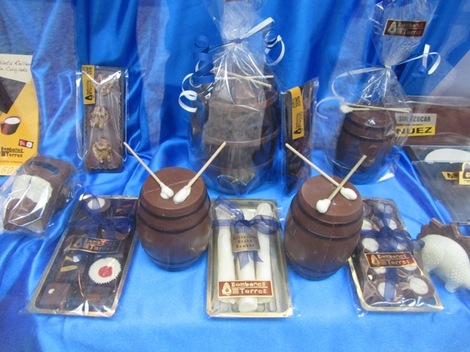
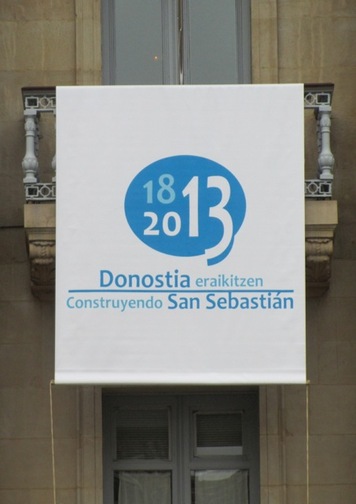
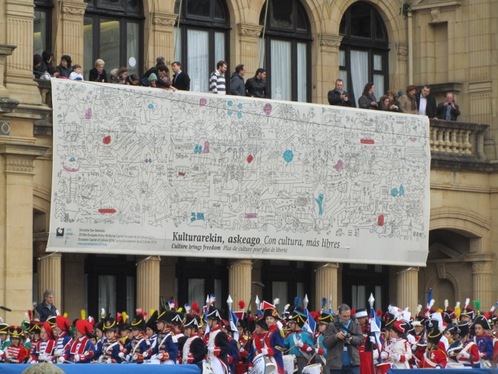
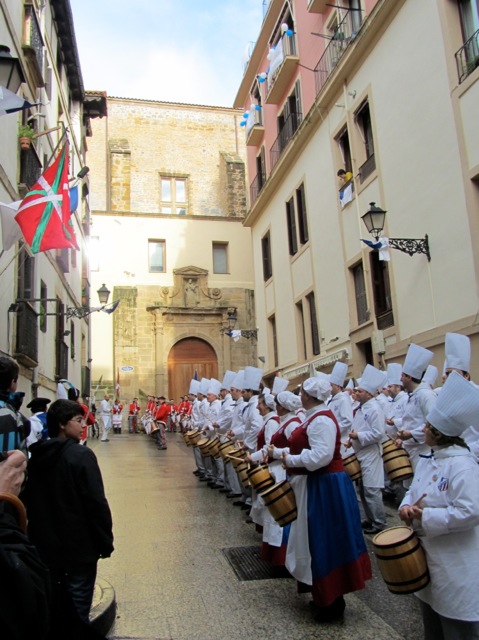
 RSS Feed
RSS Feed